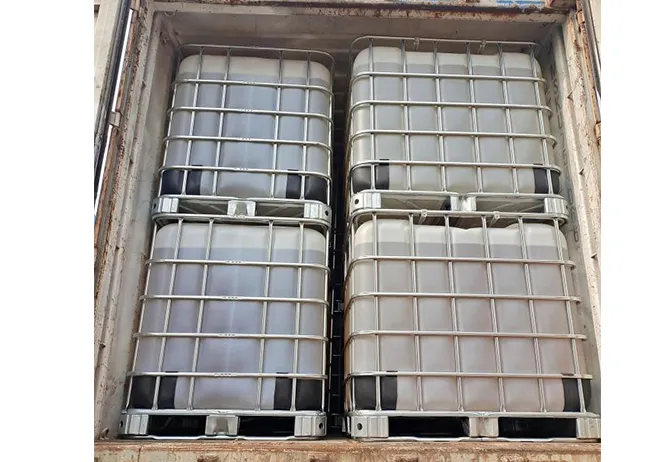
Exploring the Effects and Uses of E140 Food Additive in Culinary Applications
Understanding E140 The Natural Food Additive
In today's food industry, additives play a significant role in enhancing the flavor, appearance, and shelf life of products. Among numerous food additives classified under the European food additive numbering system, E140 stands out as a natural and visually striking ingredient. E140 refers to chlorophyll, a green pigment predominantly found in plants. It is primarily used in food as a coloring agent and offers both aesthetic and functional benefits.
Understanding E140 The Natural Food Additive
One of the primary applications of E140 is as a coloring agent in various food products. It is commonly found in items such as candies, ice creams, and beverages, enhancing their visual appeal. The bright green color achieved through E140 can make food products more attractive, appealing not only to the taste buds but also to the eyes of consumers. Additionally, E140 can be used in combination with other natural colorants to achieve different shades, allowing manufacturers to create a broader range of visually appealing products.
e140 food additive

Beyond its role as a color enhancer, E140 also possesses potential health benefits. Chlorophyll is known for its antioxidant properties, which help in combating oxidative stress in the body. Some studies suggest that chlorophyll may have detoxifying effects, aiding in the elimination of toxins and supporting overall health. While the levels of chlorophyll used in food products may not be sufficient to yield significant health benefits, its presence can contribute to a more wholesome perception of the food item.
Despite its natural origins and potential benefits, the use of E140 must comply with specific regulations. In the European Union, food additives are subject to rigorous safety assessments to ensure they do not pose a risk to human health. E140 is considered safe for consumption when used within the established guidelines. This safety assurance is crucial in maintaining consumer trust, especially as the demand for transparency in food labeling continues to grow.
It is essential for consumers to be aware of food additives like E140 and their implications. While most individuals are not allergic to chlorophyll, it is always advisable to check labels for any specific sensitivities or dietary concerns. Moreover, the increasing trend towards natural food products means that more brands are likely to incorporate E140 into their offerings, catering to the health-conscious consumer base.
In conclusion, E140 serves as an intriguing example of a natural food additive that enhances food's aesthetic appeal while potentially providing health benefits. Its ability to deliver a vibrant green color from plant sources not only makes it an attractive option for manufacturers but also aligns with the consumers' desire for natural ingredients. As the food industry continues to evolve, E140 will likely remain a popular choice, bridging the gap between food safety, visual appeal, and consumer health preferences.
-
Pure Sodium Dichloroisocyanurate Dihydrate | Powerful DisinfectantNewsAug.29,2025
-
Industrial Chemicals: Quality & Purity for Every IndustryNewsAug.28,2025
-
Nitrile Rubber Honoring Strict Production StandardsNewsAug.22,2025
-
Aspartame Ingredients Honoring Food Safety ValuesNewsAug.22,2025
-
Fertilizer for Balanced Plant NutritionNewsAug.22,2025
-
Cyanide Gold Processing with High Purity AdditivesNewsAug.22,2025
-
Formic Acid in Textile Dyeing ApplicationsNewsAug.22,2025
Hebei Tenger Chemical Technology Co., Ltd. focuses on the chemical industry and is committed to the export service of chemical raw materials.
-

view more DiethanolisopropanolamineIn the ever-growing field of chemical solutions, diethanolisopropanolamine (DEIPA) stands out as a versatile and important compound. Due to its unique chemical structure and properties, DEIPA is of interest to various industries including construction, personal care, and agriculture. -

view more TriisopropanolamineTriisopropanolamine (TIPA) alkanol amine substance, is a kind of alcohol amine compound with amino and alcohol hydroxyl, and because of its molecules contains both amino and hydroxyl. -

view more Tetramethyl Thiuram DisulfideTetramethyl thiuram disulfide, also known as TMTD, is a white to light-yellow powder with a distinct sulfur-like odor. It is soluble in organic solvents such as benzene, acetone, and ethyl acetate, making it highly versatile for use in different formulations. TMTD is known for its excellent vulcanization acceleration properties, which makes it a key ingredient in the production of rubber products. Additionally, it acts as an effective fungicide and bactericide, making it valuable in agricultural applications. Its high purity and stability ensure consistent performance, making it a preferred choice for manufacturers across various industries.





